In our previous blog post we had discussed about What is Lookup Relationship in Salesforce. In these blog post we discuss about What is Master-Detail Relationship in Salesforce.
Contents
- 1 What is Master-Detail Relationship in Salesforce
- 1.0.1 Introduction to master-detail relationship in salesforce:-
- 1.0.2 Key Features of Master-Detail Relationship:-
- 1.0.3 Setting Up Master-Detail Relationship:-
- 1.0.4 Best Practices for Master-Detail Relationship:-
- 1.0.5 A. Maintaining Data Integrity
- 1.0.6 Common Challenges and Solutions:-
- 1.0.7 Conclusion:-
- 1.0.8 Key Takeaways:-
- 1.0.9 FAQs
What is Master-Detail Relationship in Salesforce
Introduction to master-detail relationship in salesforce:-
Salesforce, a leading CRM platform, offers a powerful feature known as the Master-Detail Relationship. This relationship plays a crucial role in organizing and structuring data effectively within the Salesforce environment. Understanding this relationship is key to maximizing the potential of your Salesforce instance.
A. Overview of Salesforce
Salesforce is a cloud-based platform that provides a suite of tools for managing customer relationships and streamlining business processes. It allows organizations to store, access, and analyze data in a centralized and secure manner.
B. Importance of Data Relationships in Salesforce
Data relationships in Salesforce are essential for linking records together and establishing connections between different objects. This helps ensure data integrity, consistency, and accuracy across the platform.
C. Definition of Master-Detail Relationship
In Salesforce, the Master-Detail Relationship is a type of relationship where one object, known as the master, controls the behavior and permissions of another object, known as the detail. This relationship establishes a parent-child connection between the two objects.
Key Features of Master-Detail Relationship:-
Master-Detail relationships offer several key features that make them invaluable for data management within Salesforce.
A. Relationship Hierarchy
In a Master-Detail Relationship, the master object has full control over the detail object. This hierarchical structure allows for data security and access restrictions to be enforced effectively.
B. Cascading Deletion
One of the unique aspects of the Master-Detail Relationship is cascading deletion. When a parent record is deleted, all associated child records are automatically removed. This ensures data consistency and prevents orphan records.
C. Roll-Up Summary Fields
Roll-Up Summary Fields in Salesforce allow you to calculate and display aggregate data from child records on a parent record. This feature simplifies reporting and provides valuable insights into related records.
Setting Up Master-Detail Relationship:-
Creating and configuring Master-Detail relationships in Salesforce involves several steps to ensure proper setup and functionality.
A. Creating Master and Detail Objects
To establish a Master-Detail Relationship, you must first create the master and detail objects within Salesforce. Define the fields and relationships between the objects to determine their data structure.
first go to setup after click on the object manager.
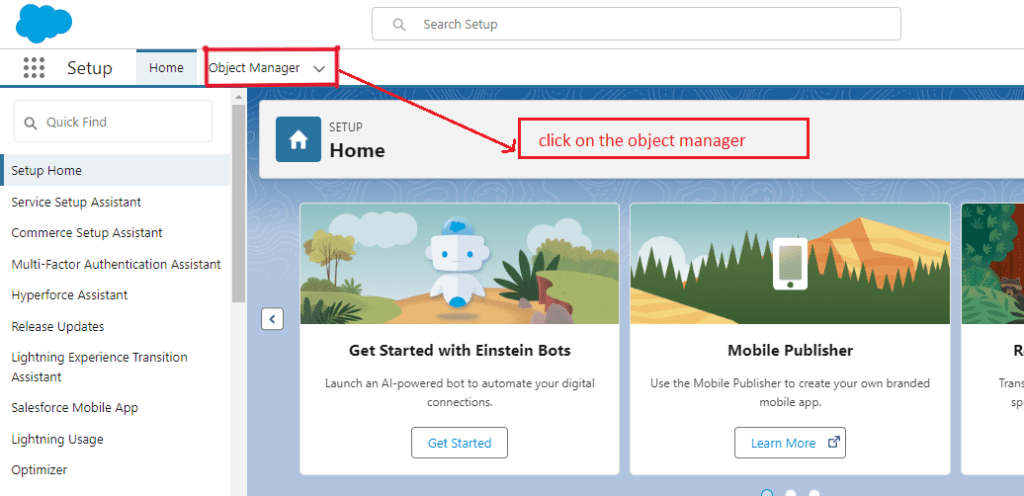
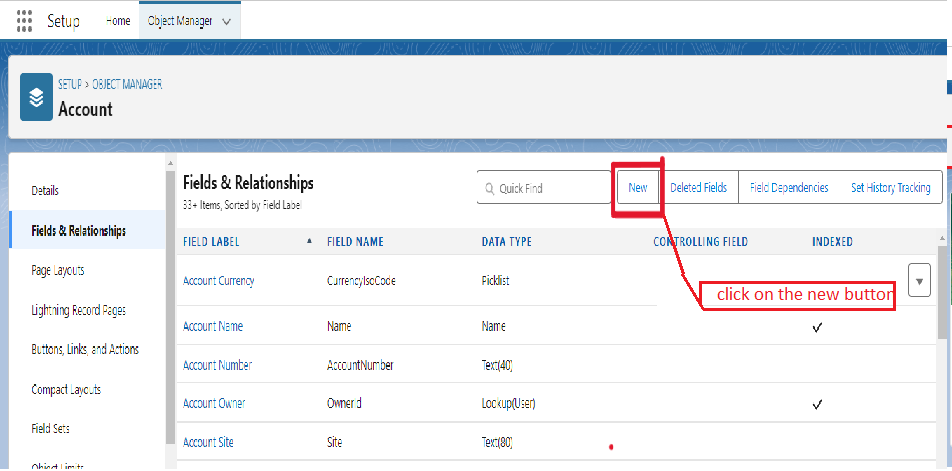
you are click on the new button, one new page will opens in that you have to select the master-detail relationship.

in this page you have to select required object.
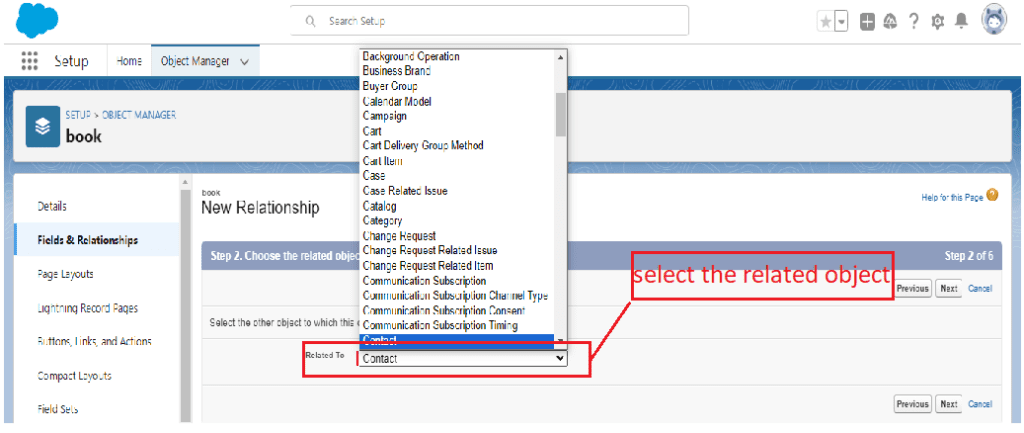
B. Configuring Field Dependencies
Set up field dependencies to establish how data is shared and synchronized between the master and detail objects. This ensures that updates to one record are reflected in related records.
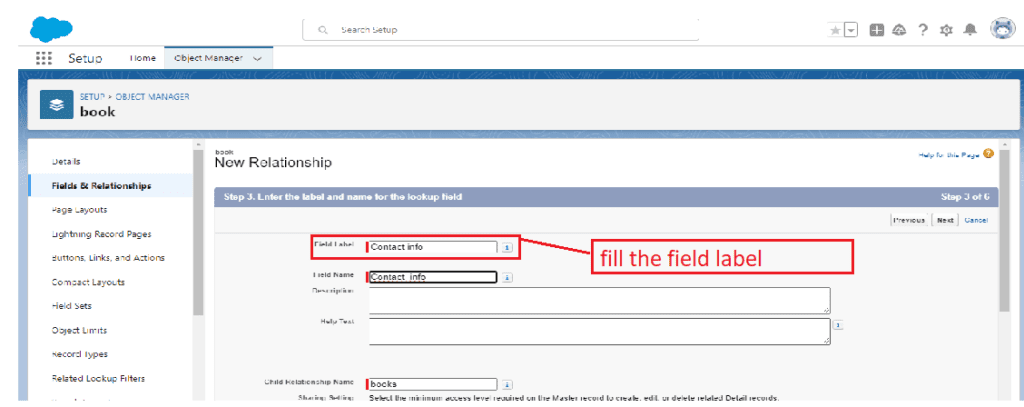
C. Permissions and Security Settings
Establish appropriate permissions and security settings for the Master-Detail Relationship to control access to data and maintain data integrity. Define who can view, edit, and delete records within the relationship.
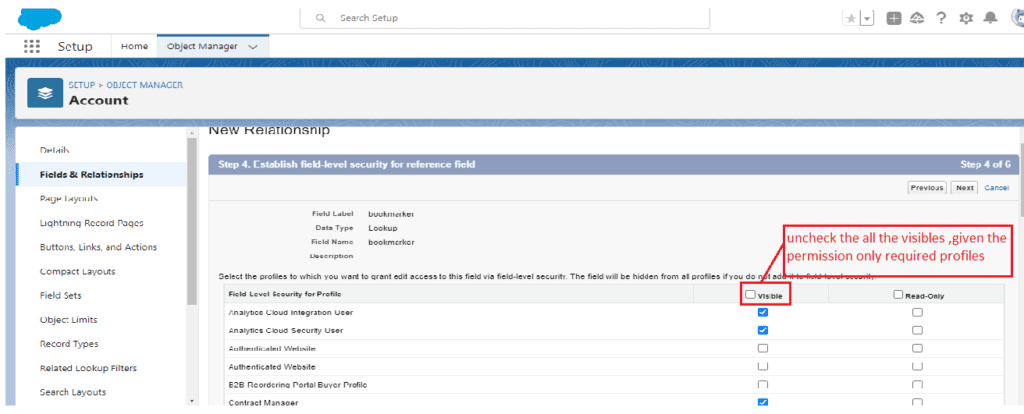
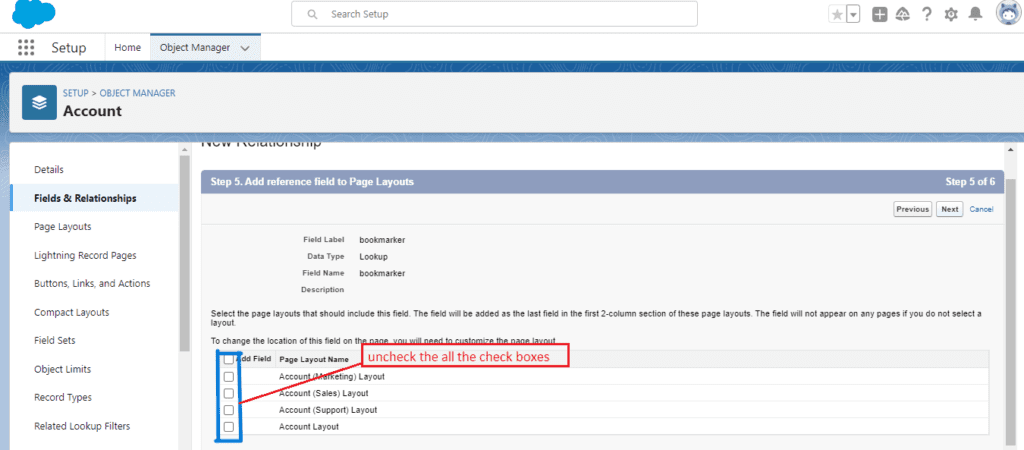
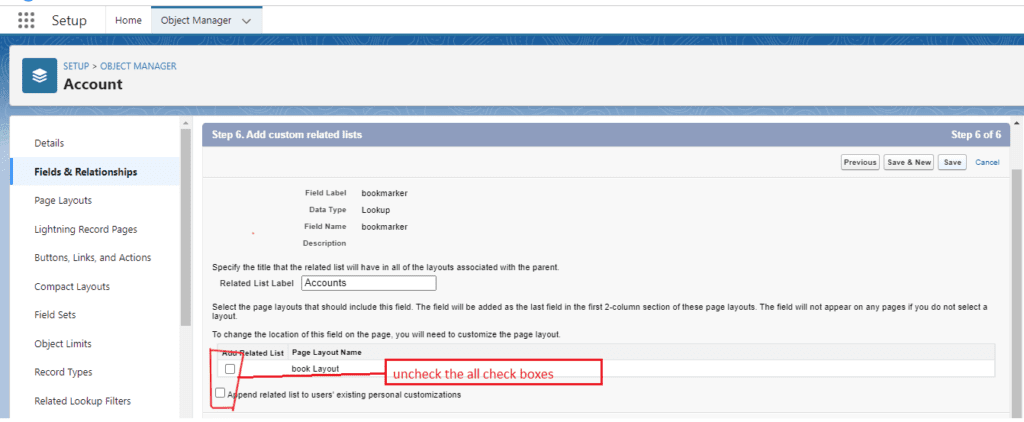
you have to know more about What is Master-Detail Relationship in Salesforce click here
Best Practices for Master-Detail Relationship:-
To make the most of Master-Detail relationships in Salesforce, follow these best practices to optimize data management and usability.
A. Maintaining Data Integrity
Regularly review and clean up data to ensure accuracy and consistency within the Master-Detail Relationship. Implement validation rules and data quality checks to enforce integrity.
B. Avoiding Circular References
Be cautious when setting up Master-Detail relationships to avoid circular references, where two objects reference each other as master and detail. This can lead to data inconsistencies and errors.
C. Utilizing Roll-Up Summary Fields
Take advantage of Roll-Up Summary Fields to aggregate data from related records and gain valuable insights. Use this feature to calculate totals, averages, or other summary information for reporting purposes.
Common Challenges and Solutions:-
While Master-Detail relationships offer many benefits, there are also limitations and challenges to consider.
A. Limitations of Master-Detail Relationship
One key limitation is that a child record cannot exist without a parent record in a Master-Detail Relationship. This restriction may impact certain data modeling scenarios and require alternative solutions.
B. Troubleshooting Relationship Errors
If you encounter errors or issues with your Master-Detail Relationship, troubleshoot by reviewing field dependencies, permissions, and data structures. Consult Salesforce resources or seek assistance from the community for solutions.
C. Alternative Data Relationship Options
If the Master-Detail Relationship does not meet your specific requirements, consider exploring other data relationship options in Salesforce, such as Lookup Relationships or External Relationships.
Conclusion:-
In conclusion, the Master-Detail Relationship is a powerful feature in Salesforce that enables efficient data management, organization, and reporting. By understanding its key features, best practices, and challenges, you can leverage this relationship to streamline your Salesforce processes and enhance data accuracy.
Key Takeaways:-
- The Master-Detail Relationship establishes a parent-child connection between objects.
- Cascading deletion ensures data consistency by removing child records when a parent record is deleted.
- Roll-Up Summary Fields offer valuable insights by calculating aggregate data from related records.
FAQs
- Can a child record exist without a parent record in a Master-Detail Relationship?
No, a child record cannot exist without a parent record in a Master-Detail Relationship in Salesforce.
- What happens to child records when a parent record is deleted?
When a parent record is deleted in a Master-Detail Relationship, all associated child records are automatically deleted as well.
- Are there any limits to the number of Master-Detail relationships that can be created in Salesforce?
Yes, Salesforce limits the number of Master-Detail relationships that can be created based on the edition and configuration of your Salesforce instance.
Remember to embrace the Master-Detail Relationship in Salesforce to unlock the full potential of your data management capabilities. Happy Salesforce-ing!
In our next blog post we will discuss about What is Self Relationship in Salesforce
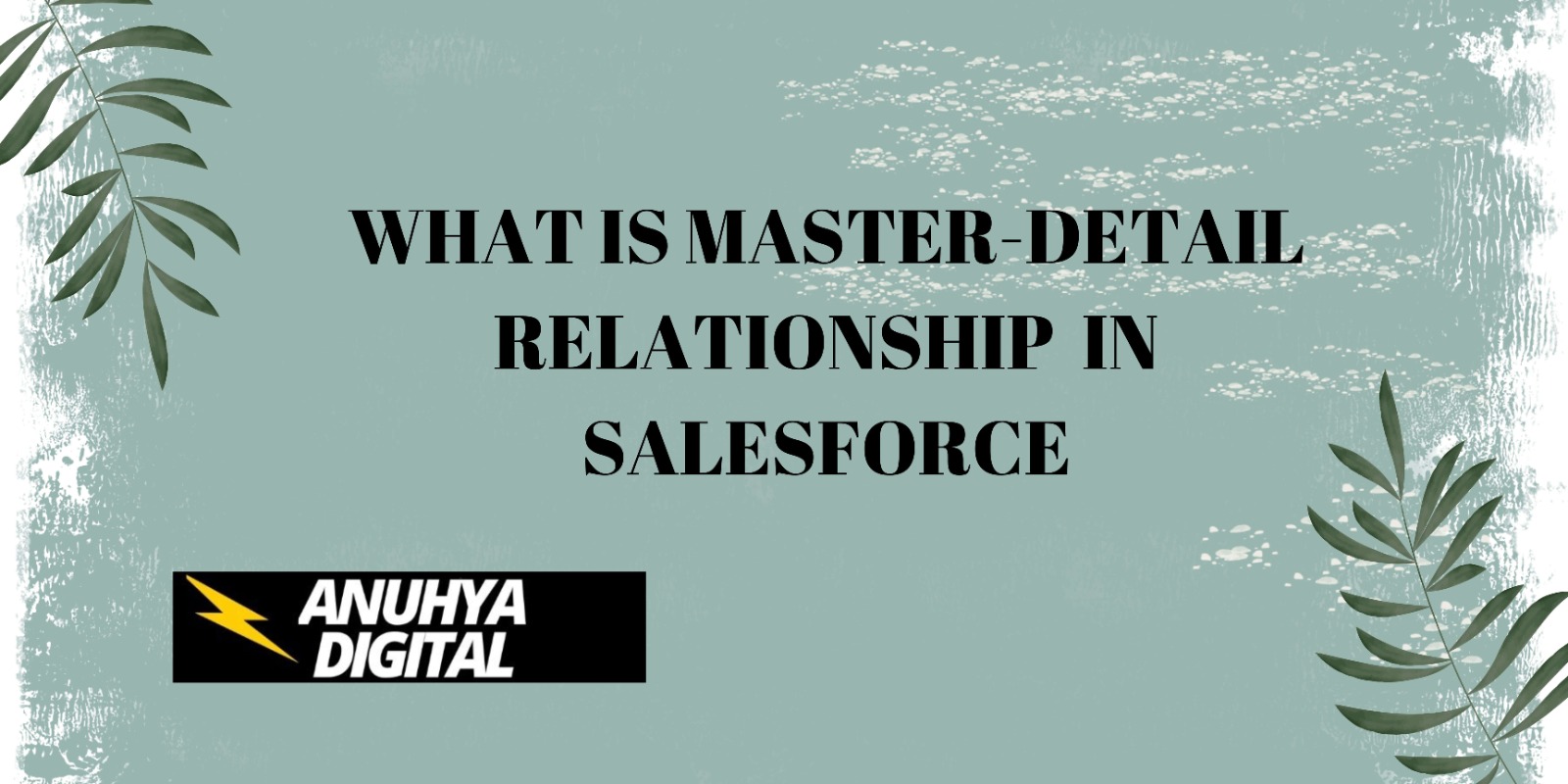
3 thoughts on “What is Master-Detail Relationship in Salesforce”